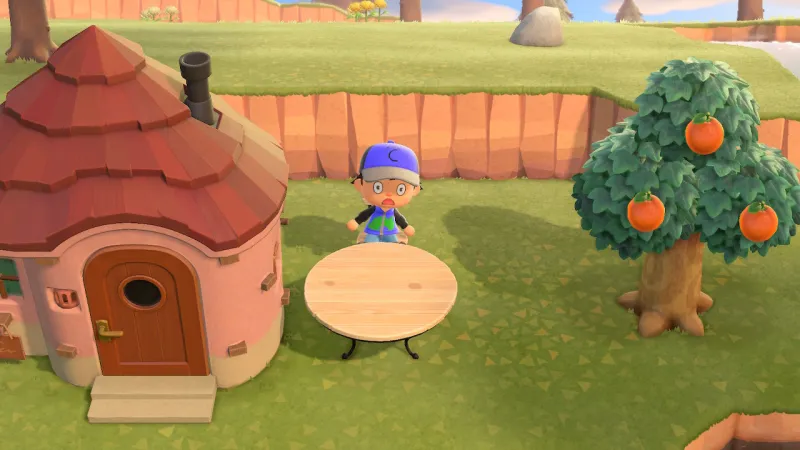

Our extra-large special edition is here. Subscribe today and receive the 25% longer issue at no extra cost!

There’s a bit of tension within the Animal Crossing games. On the one hand, you have relatively free rein to explore a town, make friends, and live life as you see fit. On the other hand, you start out with a fairly sizable debt to Tom Nook. You can choose to whittle that debt down little by little or ignore it altogether. Those are certainly options, but I prefer to focus on paying it off as quickly as I can. I don’t like having that number hanging over my head, and, more importantly, I like having all the housing upgrades that come with solvency – even if they mean more debt. Here’s how I’ve been paying off my expenses in New Horizons.
New Horizons starts out with a slightly different proposition: You don’t pay off your initial travel expenses with bells (Animal Crossing’s currency). Instead, you redeem Nook Miles at a kiosk in his tent. These miles can be earned by completing challenges, which are highlighted on your new phone. This portion of the game is quite self-explanatory. You’re essentially rewarded for nearly everything, and the miles will come pouring in. There are several simple ones that require virtually no effort, too. Do these if you’re looking for some easy ways to earn miles in the beginning that may not be quite so obvious.
- Make a post on the town’s bulletin board, which should be right by Nook’s tent.
- Use your phone’s camera to take a picture. It doesn’t matter what you snap.
- Go into your passport, add a quote and a custom title.
All right. Once you pay off your first debt to Mr. Nook, he offers you a home upgrade. You may as well take him up on the offer, since tent life is not an ideal permanent solution. At that point, we switch over to the more familiar denomination. You still earn miles for completing challenges, but your debt can only be resolved with fat sacks of those precious bells. Like Nook Miles, there are loads of different ways to earn bells. Some are more lucrative than others. Here are some of the things you should be prioritizing if you want to live debt-free ASAP.

Selling fruit is an easy way to make bells in New Horizons’ early hours. You don’t need any special equipment; simply shake a tree and the fruit will fall. Bring that fruit to Nook’s nephews, and they take it off your hands in exchange for bells. Easy enough. The problem is, you don’t get much for your efforts. Earning 100 bells for each piece of native fruit is nice at first, but you quickly outgrow it. It’s time to branch out!
New Horizons lets you charter a plane to a randomized island, starting on the second day after you begin the game. Tom Nook gives you a free ticket when the option is made available, and you can redeem 2,000 Nook Miles at his kiosk to purchase additional tickets. I wouldn’t go all-in on these tickets, but it’s not a bad idea to buy a few; things like pocket organizers (which allow you to carry more items) and the item wheel should take priority, though.
Go to your island’s airport, and tell the dodo at the counter that you want to fly. Follow the instructions, and use one of your tickets. Now cross your fingers.
If you’re lucky, you’ll arrive at an island that has a different type of fruit from your home base. The potential fruits are apples, cherries, oranges, peaches, and pears. You can also find coconuts on these remote islands. Did you find a new fruit? Great! Bring it back home and plant it (dig a hole and then bury the fruit in it). After a few days, you have a new fruit-bearing tree that produces a more lucrative harvest; the non-native fruits can be sold for 500 bells a pop. Since each tree bears three fruits simultaneously, you’re looking at a fairly significant upgrade over what you started with – 1,500 versus 300.
Coconuts are a little different. They’re only worth 250, the trees only produce two coconuts at a time, and the trees have to be planted on the beach. They’re a nice visual upgrade for your shores, but don’t think of them as investments.
It's also a great idea to talk to your friends and see what fruits they've discovered. Visit their island, either via local co-op or online, and you can trade.
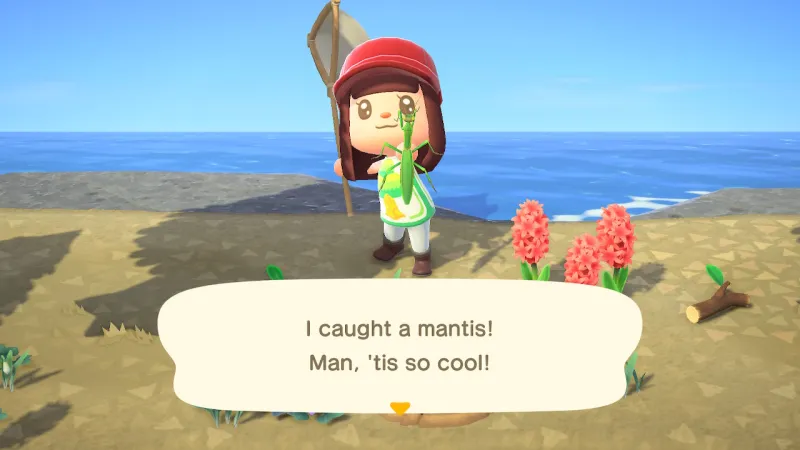
The next way you can earn bells requires some gear. Specifically, you’re going to need a net. Once you have one, you can able to scour the lands for all kinds of creepy-crawly things. It’s worth noting that the next few methods of making bells have an optional detour. Bugs and fish can be donated to Tom Nook initially, and then eventually to the museum curator, Blathers. Blathers will take the first specimen of each type of critter and add it to his collection. You don’t have to do that, but I personally like having a completed museum. It can sting a little when you give up a specimen that’s worth 10,000 bells or more, but there’s always more where it came from.
All right. Back to the bugs. You see these things all over the place. Get close to them and swing your net to snag ‘em. It can be a little tricky at first, and you’ll probably swing, miss, and scare off more bugs than you’d like. Hang in there. You might consider practicing with butterflies, since they don’t vanish into thin air when you whiff. Once you feel confident, look around flowers and the forest floor for bugs. If you hold down the A button, you enter into a stalking mode. You move slowly, but you aren’t as likely to scare your prizes away with your big ol’ footsteps.
Bugs and fish appear on their own schedules. Animal Crossing taps into your Switch’s clock settings, so the creatures you can get vary depending on the month and time of day you’re playing, as well as the weather. Your Critterpedia app is a handy reference that shows when different creatures are available, with entries added automatically after you find or catch one for the first time. It also shows whether your catch has been donated to the museum, which is particularly helpful if you’re sharing an island with other players.
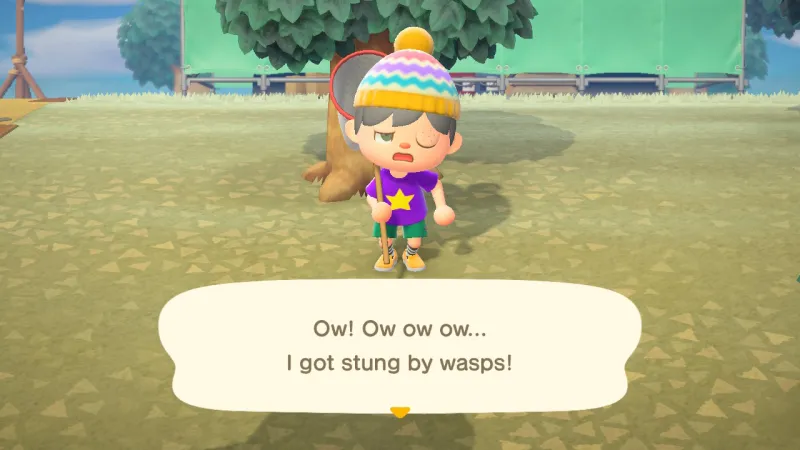
There are a few bug types that don’t show up in the open. For example, wasps appear when you shake a tree that contains one of their nests. When it falls, you only have a few seconds to get into position and swing your net at the swarm. Miss, and you get stung – and have a swollen eye to show for it. Pill bugs and centipedes appear sometimes when you hit random rocks. When you shake trees, sometimes a spider or a bagworm will slide down on its thread before going back into the tree. If your net isn’t already equipped, you can get it ready, shake the same tree again, and catch the bug. The most annoying bug to track down, at least in the spring, is the mole cricket. You hear his buzzing sound, and he isn’t anywhere to be seen. Walk to where he’s chirping loudest, and start digging around with your shovel. Eventually, you’ll dig him up. None of these hard-to-find bugs are particularly valuable, and I’ve only sought them out to hand over to Blathers to watch him squirm.
OK, if mole crickets aren’t worth tracking down, which bugs are a priority? Here’s a quick rundown of the five most valuable bugs that I’ve come across. Keep in mind that this is for the period that I’ve been playing, which is spring. More bugs will be coming with new seasons, and they’re likely to be valuable as well.
In my experience, the value of the other bugs drops precipitously after these five. Because of that, I haven’t found bug-hunting to be a particularly good use of my time. The tarantula is quite a prize, but they only appear in the evening and they’re fairly rare finds – and they knock you out if you miss your swing. Emperor butterflies are more common, and I’ll definitely chase them down when I see them. Otherwise, I tend to focus my attention elsewhere.
Here’s a complete list of all the bugs I’ve managed to collect thus far, and their value:

Bugs may be a bit of a bust, but there’s always fishing. Once you have a pole, you can raid the sea, rivers, and ponds for their bounty. Unlike bugs, there’s an element of surprise that comes with fishing; you don’t always know what you’re going to get until your line comes up. It can be a great surprise (coelacanths!), or a complete bummer (old tires.). Consult your Critterpedia to see when and where the best catches appear, and get to know the comparative size of their underwater shadows to at least tip the scale in your favor. In general, the larger the shadow, the more valuable the catch. Well, aside from those sea bass, which will likely become your nemeses. Back to Davy Jones’ locker with the lot of you!
The two best catches I’ve found so far are the golden trout and coelacanth. Both sell for 15,000 bells, which makes tracking them down a priority. That can be a little tricky, however. The coelacanth only appears on rainy days. And the golden trout can only be caught in elevated cliffside rivers. Depending on your island’s layout, the latter can be particularly tough to snag, since it may be inconvenient or inaccessible to you. You can eventually unlock tools to make it easier to navigate those river areas, but even after terraforming my island and building bridges and ramps, I’ve found that fishing in the sea is a lot easier and more reliable than rivers or ponds. Of course, your mileage may vary.
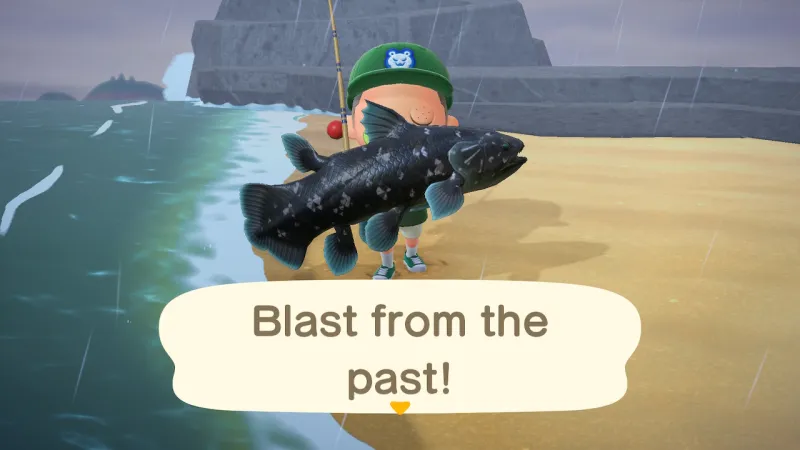
There are a lot of different fish that you can catch, depending on where you dip your line. In old-school Animal Crossing, fish were divided into two categories: rivers and seas. In New Horizon, you have those areas as well as a variety of different subsections, such as river mouths, ponds, cliffside rivers, and piers. Fish as many places as you can when you start, and consult your Critterpedia when you’re looking to find particular varieties.
Here are some of the most valuable fish that I’ve seen. Once you max out your inventory, you can easily make 40,000 or more bells with each run.
That’s just a small selection of what I’ve fished up. The rest is of varying value, with none of it coming close to the ones highlighted above. You can fish up trash, including boots, cans, and old tires. They’re virtually worthless, but I recommend putting them in your home’s storage; you can later use them to craft some…. Interesting items.
You can also find shells on the beaches. I pick them up because I don’t like clutter, but they don’t hold much value. The giant clam is the exception, at 900 bells, but it’s hardly a windfall. Here’s a rundown of all the fish (and trash) I’ve pulled up, as well as the types of shells I’ve discovered.
Finally, traveling merchants will swing by periodically. These folks are interested in bugs or fish, and they’ll buy them from you at prices that are 50-percent higher than what the Nooks offer. As you might imagine, this can be huge if you have time to harvest those items.
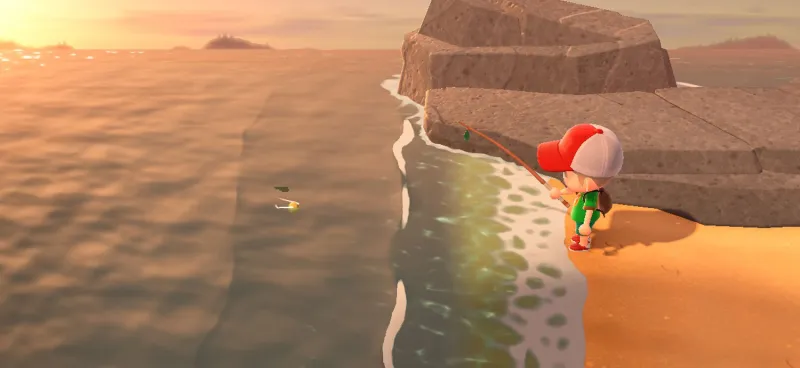
I enjoy fishing, and it’s been the most reliable way I’ve found to make money in New Horizons. There are a few more things you can do, too, but I can’t recommend them as a main source of income.
First, you can collect a variety of raw materials throughout the world, which can be used for crafting tools and furniture. The Nook boys will buy them from you, too, which may be an option if you’re particularly hard up. I’d advise against it, though. Keep these things in storage, if at all possible; you never know when you’re going to need these materials and other items, and it’s better to have it when you need it. The outlier is the gold nugget. I’ve found a few of these from bonking rocks with my shovel, but they’re a rare sight. They’re valued at 10,000 bells, too, which makes it tempting to sell them off. I’d caution against doing so. I have a few crafting recipes that call for them, and I suspect they’d be used to create unbreakable tools – if such things exist. Just to be safe, I recommend hanging onto them.
The turnip markets are another way to make some bells, but it can be risky. Every Sunday, a traveling boar comes to visit, bearing turnips. You buy them at their current market value, which will then fluctuate throughout the week. The goal is to sell them when they’re worth more than you paid for them, but the market is fickle and unpredictable. Sit on them too long – in this case, until the next Sunday – and they’ll spoil. Spoiled turnips are about as valuable as you might imagine.
The market has potential to make you some nice cash, but I tend to stay away in favor of more dependable earning opportunities. Your mileage may vary, however.
Here’s a quick rundown of some of the common resources and other items that you can sell to the Nooks. It’s pretty dire compared to your other options, as you can see, which is why I only consider it an option of last resort:
There's one last category of things that you can sell, and they're fossils. After digging them up and getting them identified, you can sell them for several thousand bells. I don't want to tell you how you should be playing Animal Crossing, but you may or may be a maniac if you don't attempt to donate these finds to the museum before selling them off. You'll get duplicate fossils over time – these islands are pretty amazing places – which should reduce the sting of donations during the early weeks. Plus, you're helping science!
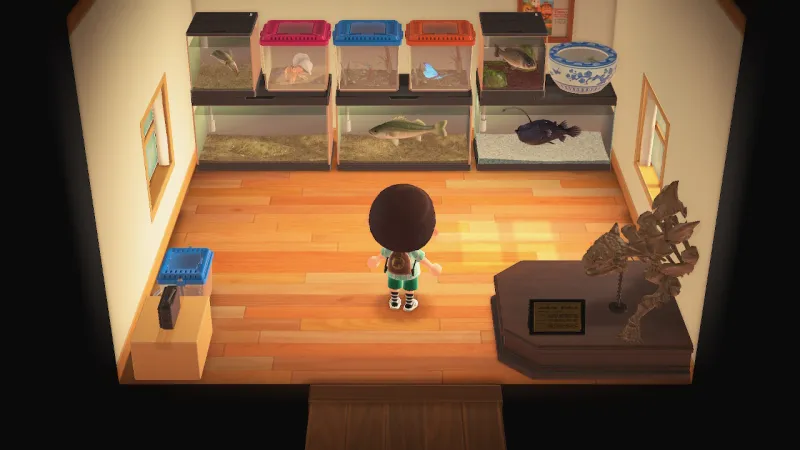
That about does it for now. These are the best ways I’ve found to earn bells in New Horizon. I’m certain that I’ve missed a fish, bug, or item, but I’ll add them to the list as I discover them. I’ll also pop in with new additions throughout the year. Looking at my Critterpedia, there are a ton of things we haven’t yet seen. Here’s hoping that they’re worth the search!
In the meantime, here’s the complete list of items that I’ve found:

Explore your favorite games in premium print format, delivered to your door.